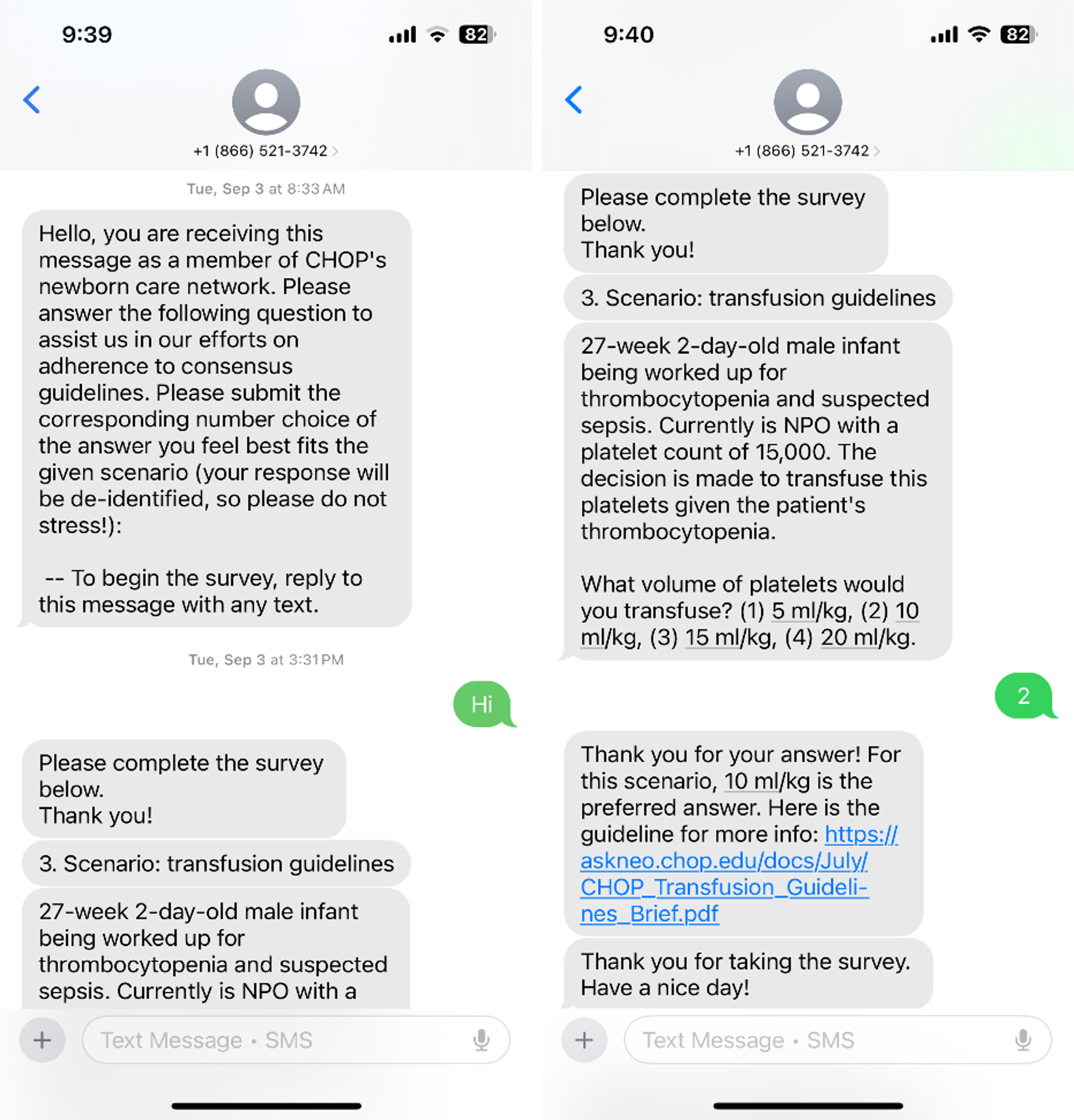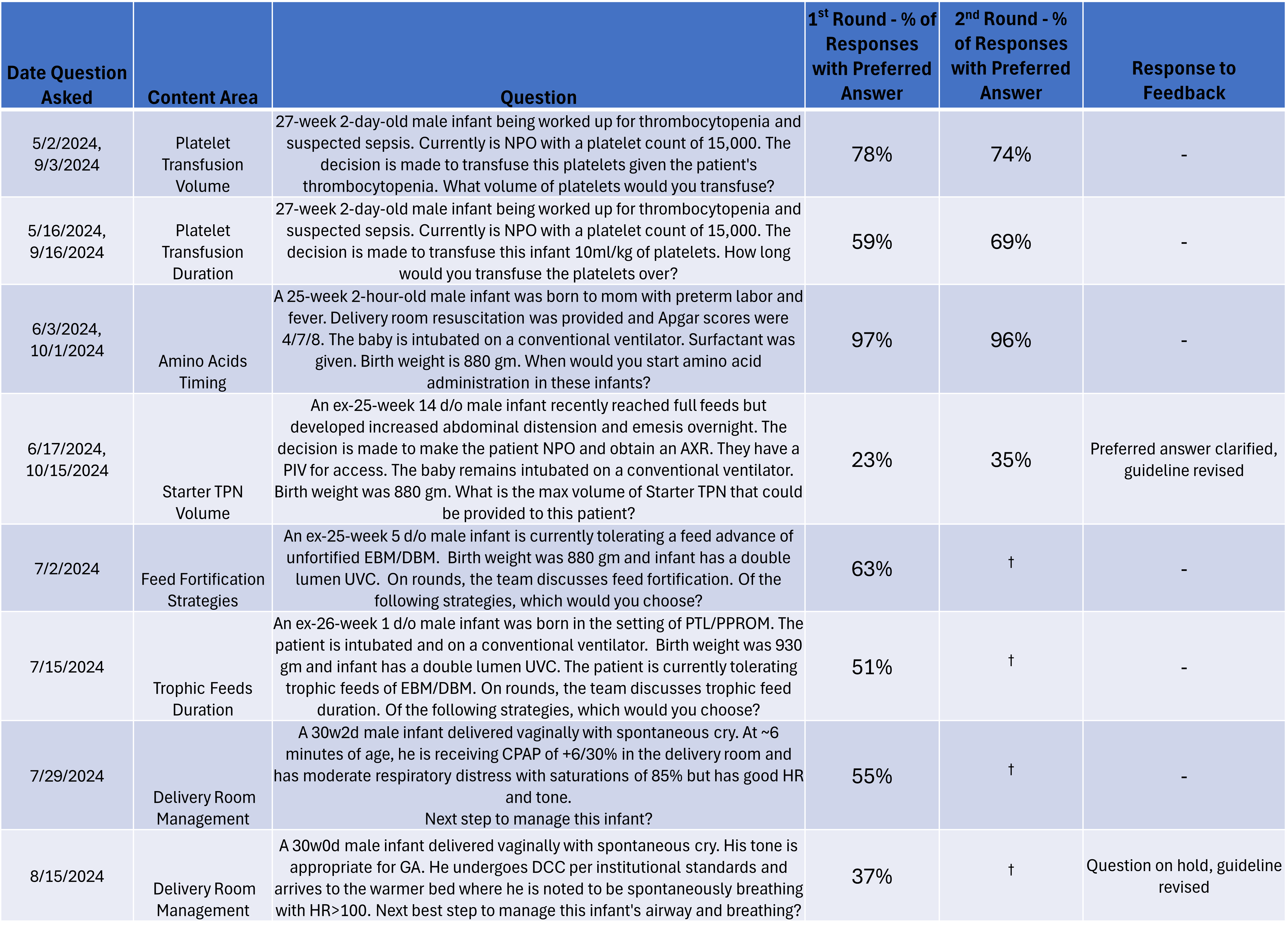Neonatal Quality Improvement 5
Session: Neonatal Quality Improvement 5
513 - Creation and Implementation of a Novel Mobile Technology Tool to Support Clinical Guideline Awareness and Adherence in a Network of NICUs
Saturday, April 26, 2025
2:30pm - 4:45pm HST
Publication Number: 513.4230
Alex B. Ruan, Children's Hospital of Philadelphia, Drexel hill, PA, United States; Jacob DeMarino, Children's Hospital of Philadelphia, Philadelphia, PA, United States; Crystal T. Bass, Childrens Hospital of Philadelphia, Galloway, NJ, United States; Melissa Schmatz, Perelman School of Medicine at the University of Pennsylvania, Philadelphia, PA, United States; Sharath Chowdawarapu, CHOP Newborn care, Plainsboro, NJ, United States; Purvi Kapadia-Jethva, Childrens Hospital of Philadelphia, monmouth junction, NJ, United States; John Chuo, Perelman School of Medicine, University of Pennsylvania, Doylestown, PA, United States
.jpg)
Alex B. Ruan, MD (he/him/his)
NICU/Clinical Informatics Fellow
Children's Hospital of Philadelphia
Drexel hill, Pennsylvania, United States
Presenting Author(s)
Background: The Children’s Hospital of Philadelphia Newborn Care Network (CNBCN), comprised of 19 neonatal intensive care units (NICUs) in Pennsylvania and New Jersey, has created numerous evidence and consensus-based guidelines to standardize the care provided in network NICUs.
Objective: An initiative with network quality improvement (QI) and implementation science experts was started to improve awareness and adherence to these guidelines. This resulted in the development of a novel mobile technology tool called the Practicing Excellence, Adherence and Resource (PEAR) Tool.
Design/Methods: The PEAR Tool utilizes REDCap’s Twilio SMS based messaging and survey platform. Physicians, including NICU fellows, at 16 NICUs were included. Short clinical scenarios tied to practice guideline content, which covered neonatal nutrition, transfusion practices, and delivery room management were created (Table 1). A single scenario is sent approximately every two weeks via text message asking recipients to select the preferred management choice. After responding, the preferred answer and a link to the relevant guideline is provided (Figure 1). To assess impact on knowledge retention, repeat questions are currently being distributed. Response data are sent to the network regularly and provider feedback was obtained post-implementation.
Results: The PEAR Tool response rate from May 2024 through October 2024 is visualized with a P-chart (Figure 2), showing an overall average of 63.9% and a special cause signal in October, with 2 out of 3 points in the outer third of a 3 sigma limit. For the first round of questions, 58% of responses were in line with the preferred answer, with repeated questions showing an overall average change of +4.5% thus far (Table 1). The Net Promoter Score from providers was 23.6. Qualitative feedback guided modification of PEAR Tool implementation (i.e. timing, question quality), as well as guideline revisions (Table 1).
Conclusion(s): This work represents our initial effort to study the use of a technology driven engagement tool to improve awareness and adherence to evidence and consensus-based practice. The PEAR Tool shows early promise in supporting this effort in our network. Further work is required to measure the impact of such a tool on clinical practice, and in particular any association with preferred answer rate, which could be evaluated with electronic health record level data. Moving forward, we plan to grow the PEAR Tool’s question library to cover new and existing guidelines, as well as include other care team members, such as neonatal advanced practitioners and nurses.
Figure 1
 Example of PEAR Tool question with answer and reference link
Example of PEAR Tool question with answer and reference linkTable 1
 Summary of question content and percent of responses with preferred answer. Data from second round of questions shown, † denotes questions that have not been asked a second time yet. Where applicable, changes made as a result of question feedback are shown.
Summary of question content and percent of responses with preferred answer. Data from second round of questions shown, † denotes questions that have not been asked a second time yet. Where applicable, changes made as a result of question feedback are shown. Figure 2
.png) P-Chart with established trial limits of 12 data points demonstrating response rate for PEAR Tool thus far. Of note, in October 2024 criteria for special cause variation met with two out of three consecutive points near control limit/outer one-third.
P-Chart with established trial limits of 12 data points demonstrating response rate for PEAR Tool thus far. Of note, in October 2024 criteria for special cause variation met with two out of three consecutive points near control limit/outer one-third. 

